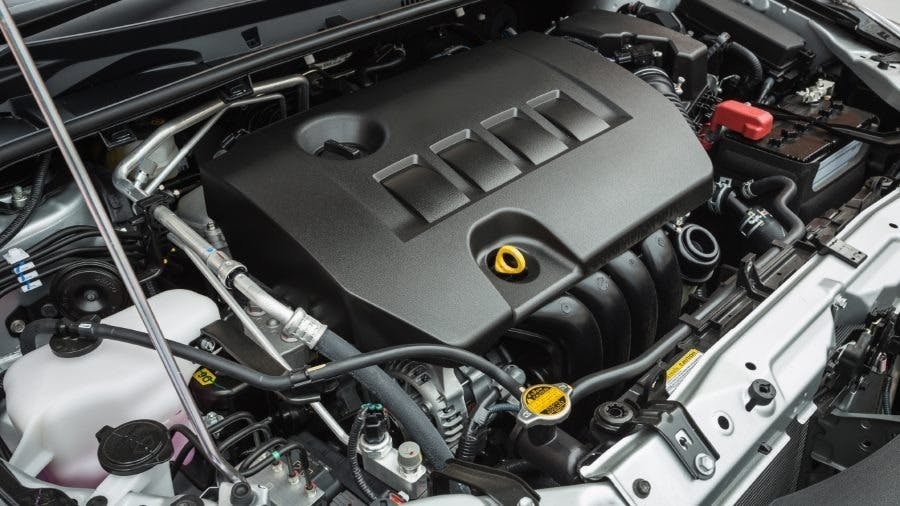Guide To The New WLTP Regulation

From 1 September 2018 all new vehicles will have to go through the Worldwide Harmonised Light Vehicle Test Procedure (or WLTP for short) in order to go on sale in the UK. This article explains exactly what WLTP is and how it will affect drivers.
-
The Purpose of Testing Vehicles
There are 5 key reasons why vehicles are tested before going on sale. Testing allows people to compare different vehicles, ensures CO2 targets are adhered to, is used on official documentation and provides consumers with more information about the vehicle.
Testing allows people to make a direct comparison between 2 or more vehicles based on their C02 emissions and their combined fuel economy. In order to give a direct comparison, a number of standardised and repeatable procedures have to be followed.
Measurements taken from these lab tests verify that the manufacturer’s new car fleet do not emit more emissions than the European Union target (which aims to be at 95g per kilometre by 2021). The targets are in place to try and reduce the impact of CO2 on human health.
The UK is one of many European countries that use a vehicle’s CO2 emissions to determine the road tax payment. From 1 April 2017 the way that vehicle excise duty (commonly known as road tax) was calculated changed for all new vehicles registered in the UK.
Under the Car Labelling Directive, all vehicle manufacturers and dealers (including Pentagon) have a legal obligation to provide fuel consumption and CO2 emissions to consumers. This is so customers can make the most well-informed decision possible when deciding on which car to buy.
Lab tests play a vital stage in bringing a car to the EU market. Before cars can be sold in any EU country they are tested using the laboratory test cycle by national technical service in accordance with EU regulation. Once all the relevant requirements have been met, the national authority delivers an EU vehicle type approval certificate to the manufacturer which authorises them to sell in the EU.
-
Key Changes
At the moment all cars have to go through New European Driving Cycle (NEDC) testing before going on sale. The current tests were originally devised back in the 1980s and many feel they have become obsolete due to the evolutions in technology and the changes in driving conditions over the last 30 years. Regulators believe the new WLTP will better reflect today’s real-world driving conditions.
Here are the key differences between the current and incoming tests.
NEDC WLTP Test Cycle Single test cycle Dynamic cycle more representative of real-world driving Cycle Time 20 minutes 30 minutes Cycle Distance 11 kilometres 23.25 kilometres Driving Phases 2 phases (66% urban and 34% non-urban driving) 4 more dynamic phases, 52% urban and 48% non-urban Average Speed 34 kilometres per hour 46.5 kilometres per hour Maximum Speed 120 kilometres per hour 131 kilometres per hour Influence of Optional Equipment Impact on CO2 and fuel performance not considered Additional features (which can differ per car) are taken into account Gear Shifts Vehicles have fixed gear shift points Different gear shift points for each vehicle Test Temperatures Measurements at 20-30°C Measurements at 23°C, CO2 values corrected to 14°C -
Laboratory Vs Real World Performance
Critics have long argued that the current NEDC testing doesn’t truly reflect real-world driving conditions and this is something the new WLTP will look to address. Taking the vehicle on a greater variety of roads and replicating modern driving styles should mean the new values are more representative of real-world driving figures.
There are many influences on driving performance that can be different each day and with each driver. These factors include driving styles, traffic and weather conditions. As there are so many different variants it would be almost impossible to match every drivers’ true performance plus there needs to be consistency in the tests so they can be compared on a like-for-like basis. Therefore, the new WLTP aims to find the European average.
-
How Will This All Affect Drivers?
The aim of the new test is to provide drivers with better information. For example, having a more accurate combined fuel economy figure will give drivers a better indication of how much it will cost in fuel.
There is a chance that CO2 figures may be higher under WLTP as the testing procedures are much more rigorous than NEDC. As a result, it could slightly change the road fund licence figure attributed to a vehicle. For example, under the old scheme a vehicle may have a CO2 figure of 100 g/km but under the new test is will be 120 g/km. Under current UK road tax rules, it would mean drivers will pay an extra £40 in tax. There is good news about this though; one of the main principles of WLTP was to ensure it didn’t negatively affect customers and so there is a strong chance that current taxation brackets could be adjusted to consider this change. However, there’s been no announcement so far by the UK government.
-
Moving Forward From September 2018
The changes coming into effect on 1 September 2018 form only part of the transition from NEDC to WLTP. It all started back on 1 September 2017 with all newly registered vehicles having both NEDC and WLTP figures on all official documents.
Although sales brochures and dealer websites will display WLTP-based results from 1 September 2018, at all car dealerships only NEDC values should be used on labels and information until the end of 2018. The on-site team will be able to clarify whether a figure is based on WLTP or NEDC values. From 1 January 2019, it will be mandatory for all figures in car dealerships to be based on WLTP rather than NEDC.
An exception to the new regulation is likely to be made for end-of-series vehicles to allow for a limited number of unsold vehicles in stock that were approved under the old NEDC test to be sold for one more year. Again, the on-site team can clarify if a vehicle falls into this exception or not.
In 2020 the European Commission will convert the NEDC-based CO2 targets that are used today into specific WLTP targets of comparable stringency. Although the UK will no longer be in the European Union it will still apply to all UK vehicles as their engines will be identical to their European counterparts. However, it is unclear whether there will be additional regulation introduced post-Brexit.
-
Got A Question?
Anyone with any questions about these changes should contact the team at their local Pentagon dealership. If the information is not available yet then the Pentagon team will try and get the information and send it over as soon as it is released.


